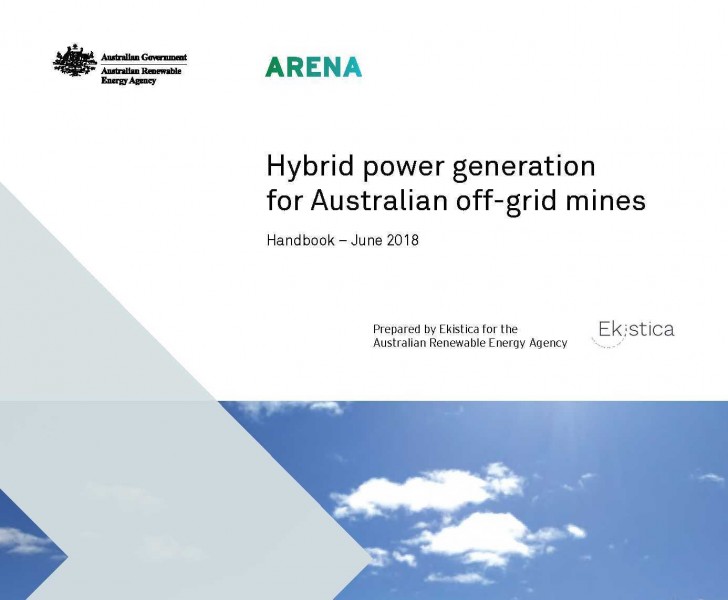A free book on hybrid power generation for off-grid mines has been released by the Australian Renewable Energy Agency (ARENA) to address the barriers mines may encounter when transitioning to alternative power generation options.
Although commissioned in Australia, this handbook has global application. It covers:
- The role of power in mining
- An introduction to hybrid power generation
- Integration considerations
- Commercial structure options
- Financial modelling
- Detailed considerations for final studies and design
- Examples of opportunities to use hybrid power generation.
Download your copy of the handbook here.
CEEC Director and Energetics Chief Operating Officer Dr Mary Stewart and CEEC Advocate and Resourceful Paths Principal Consultant Laurie Reemeyer were invited by ARENA to provide technical direction to the handbook and share their insights.
Mary said Hybrid Power Generation for Australian Off-Grid Mines was a useful reference document for remote, off-grid mines facing energy cost pressures. She said the premise of the handbook was that mines were best served through a combination of traditional power supply options and renewable electricity generation technologies.
“The case studies provide constructive electricity generation models that could be potentially implemented in many locations. By providing relevant information on geography, financing and operation, the handbook gives a good overview to sites to enable them to decide if there is value in further investigating the feasibility of hybrid renewable systems,” she said.
“Given its focus on hybrid systems, the handbook also pays due attention to the integration of renewables into existing site reticulation networks. Implementation of these systems can improve certainty, by reducing reliance on fossil fuels with potentially volatile prices and uncertainty of future carbon regulation. The handbook also explains some of the environmental advantages of hybrid renewables installations.”
Mary said that, in the longer term, the greenhouse gas reductions from switching to hybrid renewables could improve the sustainability performance of mining operations, and could contribute to Australian emissions reduction goals. By adopting this strategy, company directors could also meet their obligations for climate change disclosures. In addition, in some communities, hybrid-power systems could leave attractive legacy assets for community stakeholders post mine closure.
CEEC CEO Alison Keogh said the Coalition for Energy Efficient Comminution was pleased to have collaborated with ARENA on this useful publication.
“CEEC supports technologies and practices that improve the profitability and long-term resilience of mining operations,” she said.
“This handbook provides potential pathways to achieve these goals. Hybrid power systems also offer an opportunity for companies to innovate and participate in the transition to cost-effective and environmentally attractive power systems.”
ARENA’s remit is to accelerate Australia’s shift to affordable and reliable renewable energy future. The handbook was developed by Ekistica on behalf of ARENA.
The release of the handbook coincides with the growth of on-grid mining operations moving to corporate power purchase agreements (PPAs) – long-term contracts under which the operation agrees to buy electricity directly from an energy generator rather than via the traditional methods of buying from licensed electricity suppliers. This approach provides financial security for utility companies and enables them to fund and build renewable energy facilities.
Energetics Associate Anita Sadler said there was a compelling rationale for using PPAs as a risk management instrument under current market conditions.
“Corporates that act in 2018 have a good buying opportunity. Interest rates, a key driver of PPA prices, are still low and there is intense competition amongst new renewable energy projects to secure PPAs in the period up to 2020, which is the target date for the RET (renewable energy target),” she said.
“These advantages apply equally to on-site and offsite power purchase agreements. The majority of the value of a corporate PPA is likely to be realised well before 2025. Delaying will reduce the financial benefit due to the higher LGC (environmental certificates) and electricity prices, especially in the period to 2021. The market prices for this period are known. Much past 2021, the LGC price and the electricity price are difficult to predict, so your returns are not as readily defined.
“So, entering into a PPA (whether with an onsite or offsite renewable generation project) will enable you to optimise your risk-weighted returns.”
